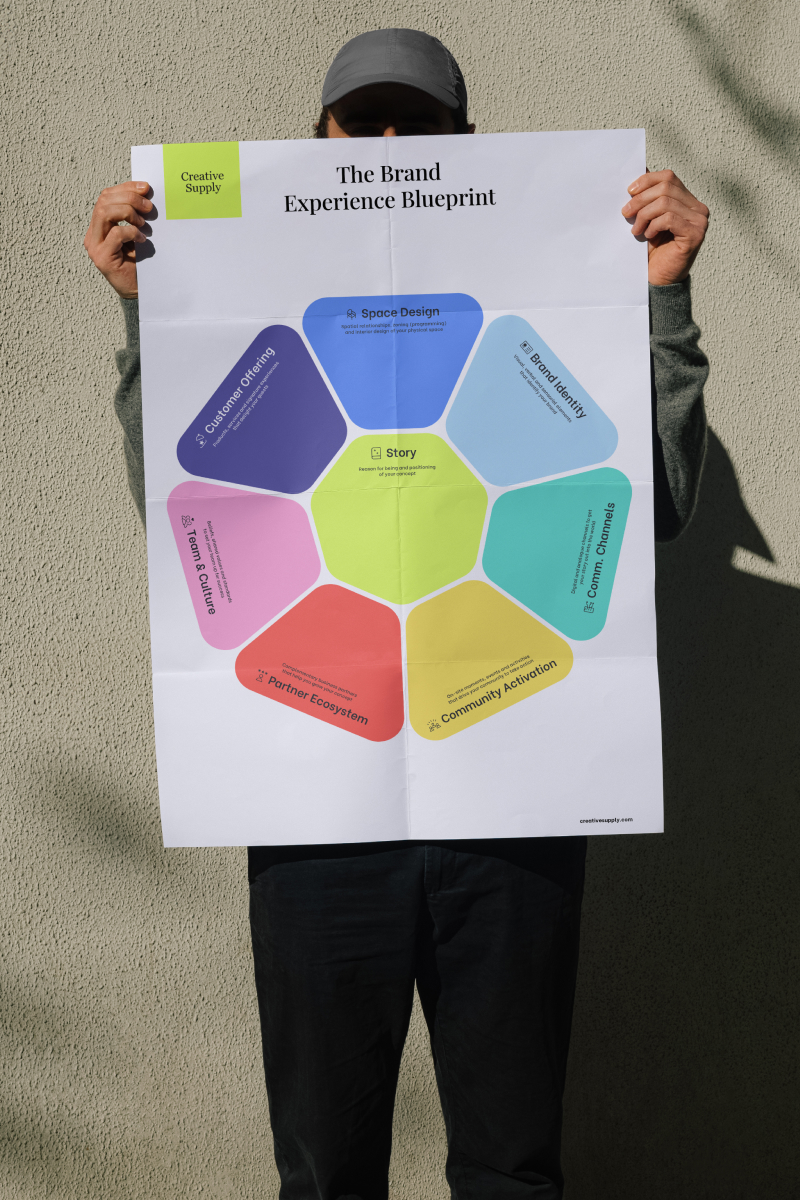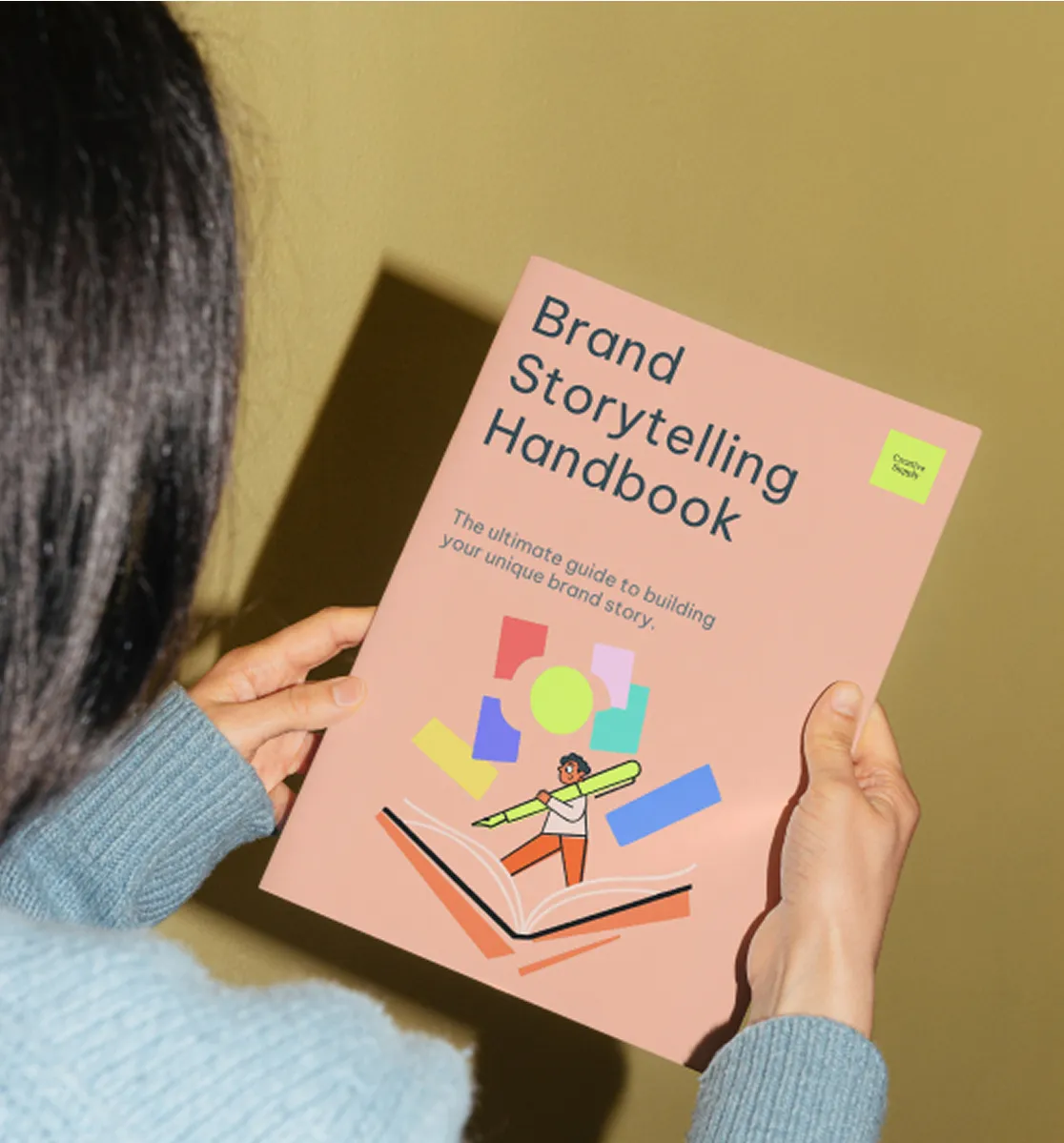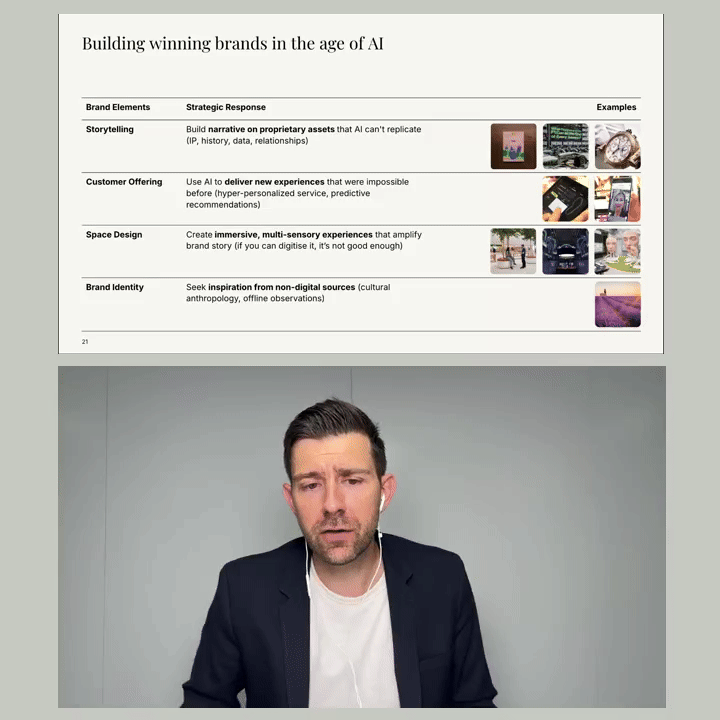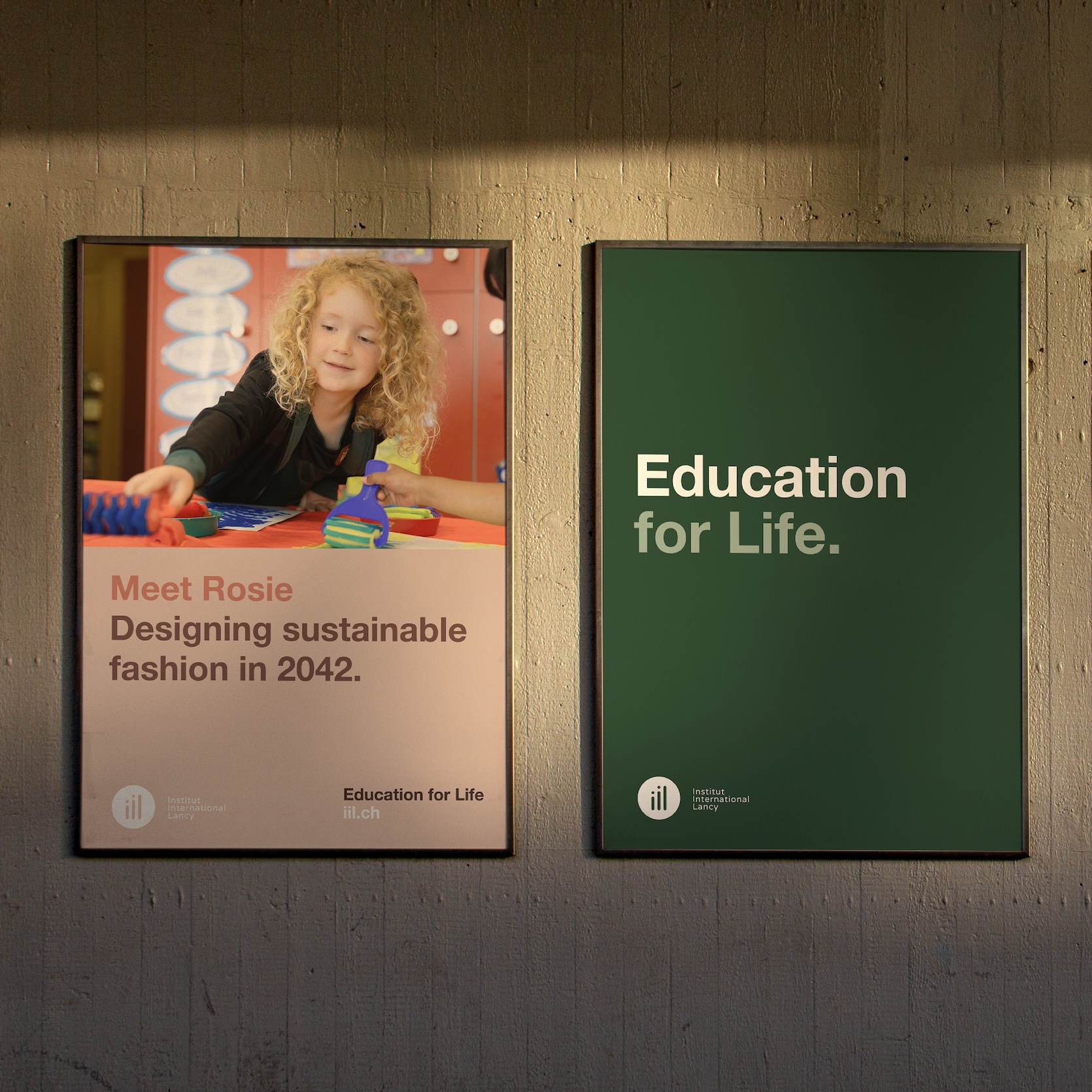The ultimate online guide to Brand Storytelling
Everything you need to know about what makes a great brand story and how to build one for your business.

Every day, we are exposed to over 4’000 brands. From our morning toothpaste to our late-night whisky, they are an integral part of our existence.
New and established brands alike want to tell us their story to get a share of our attention and, ultimately, of our wallets too. Brands with great stories don’t just advertise their products, they use storytelling as a strategic asset and offer us a window into their unique worldview. Mastering storytelling can give you and your organisation a real competitive edge, no matter its size or activity. Read on to find out how.
The origins of brand storytelling
Storytelling is a buzzword. From digital marketers to company executives and career coaches, everybody stresses the importance of storytelling. But despite all the marketing humdrum, storytelling is hardly a new concept.
Storytelling is ingrained in our DNA. Humans have been telling stories for as long as we can remember. Evidence of some of the first stories can still be found today, painted on the walls of prehistoric cave dwellings. They depicted events and ceremonies, detailed the local fauna or flora and were even used to warn others of danger.
Same old story?
From that point on, stories have never stopped evolving: from cave dwellings to cuneiform tablets and papyri, together with oral traditions bridging our earliest past to our digital present.
Stories have been a constant in all of human history, and as we evolved, so did they. They became richer, more complex, able to elicit emotions and spark debate and introspection. But the main mechanics of storytelling, the ability to weave together context, characters and a plot, have stayed the same. What was used then is still relevant today.
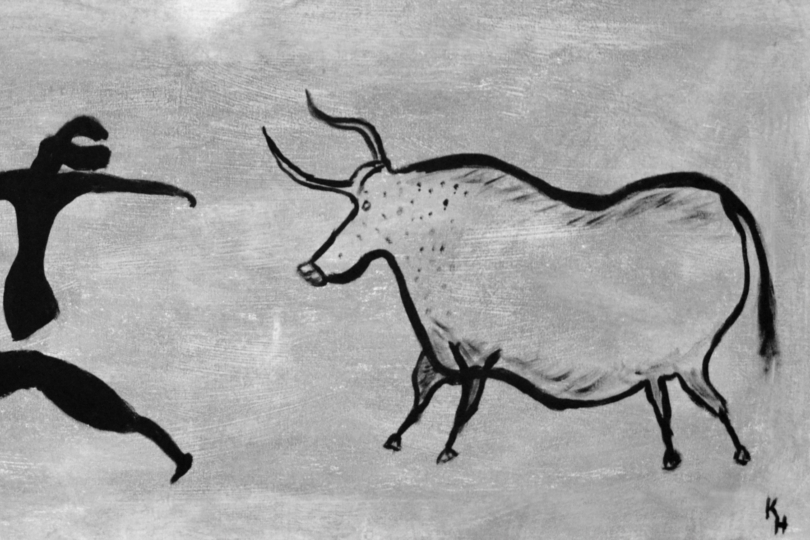
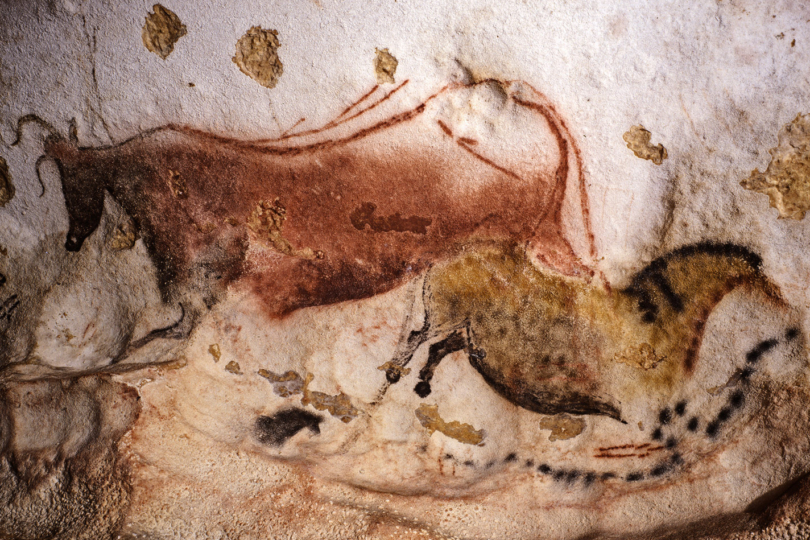
Tell a story that is worth believing in
When people believe in a brand story, they no longer see themselves as customers. They see themselves as actors or characters with an active part to play in the story.
Supporters of football teams like Chelsea FC, Paris Saint-Germain or Bayern Munich are not just fans of the sport. They believe in their team’s unique story, full of myths, heroes and rivals. This, more than the team’s performance, is what drives them to spend hundreds or thousands of euros annually on game tickets and merchandise. To outsiders, the willingness to invest so much time and money in a football team can seem frivolous. But that is only because they don’t believe in the “story of football teams.”
Find the right audience to tell your story to
Different people believe in different stories – Apple fans still go up against Microsoft or Android users because they believe in the story of so-called “Apple supremacy”, and because that story paints them in a positive light.
Owners of Rimowa luggage will acknowledge each other at airports because many still believe in the story of a “sophisticated traveller class,” while Crocs wearers are proud to defend the brand’s “comfort over style” mantra in any setting.

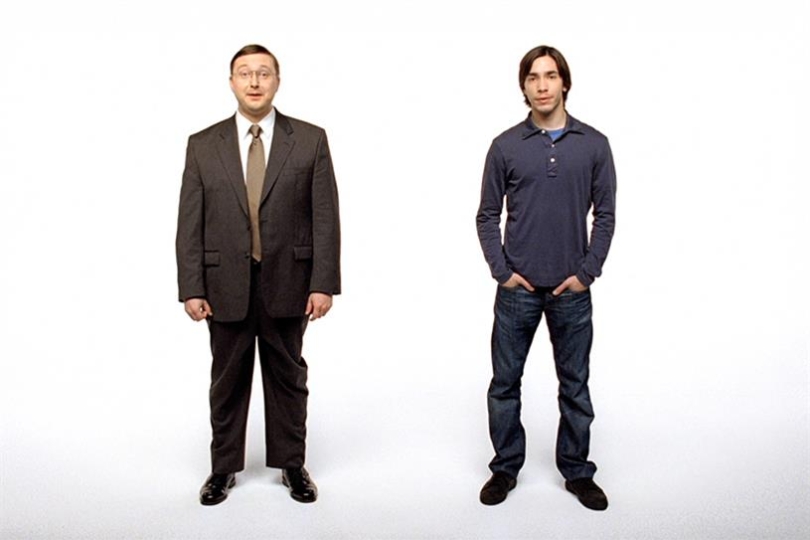

Tell a story that never ends
As a brand, you don’t want your story to end. You want to keep your customers endlessly engaged without having to reinvent the wheel every year. Take British rock mega-group Coldplay. When the band released Viva la Vida or Death and All His Friends in 2008, they called themselves the “greatest band in the world” and said the album was their masterpiece. Effectively, they told the world they had peaked, and what happened from that point is that interest in the group started to fade. By comparison, computer tech and IT consulting company IBM centres its story around the idea of building a smarter planet. The planet can always become smarter, and thus, their story can be unending.
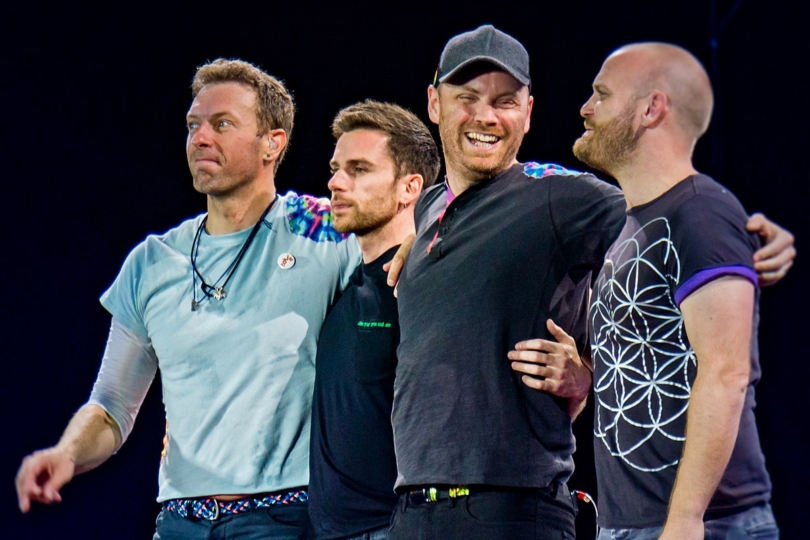

How to create the perfect brand story
Now that we have clarified the importance of storytelling for brands, it is time to look at the “behind the scenes” of brand storymaking. What makes a good brand story? How do you create one? Are there differences between companies’ sectors or maturity levels? To answer these questions, we developed our own “storymaking” model: the Brand Story Canvas. Combining extensive research and learning from countless consulting assignments, our method for building brand stories is taught at top universities such as ESSEC in Paris, the Ecole Polytechnique Fédérale de Lausanne (EPFL) and Ecole hôtelière de Lausanne (EHL).
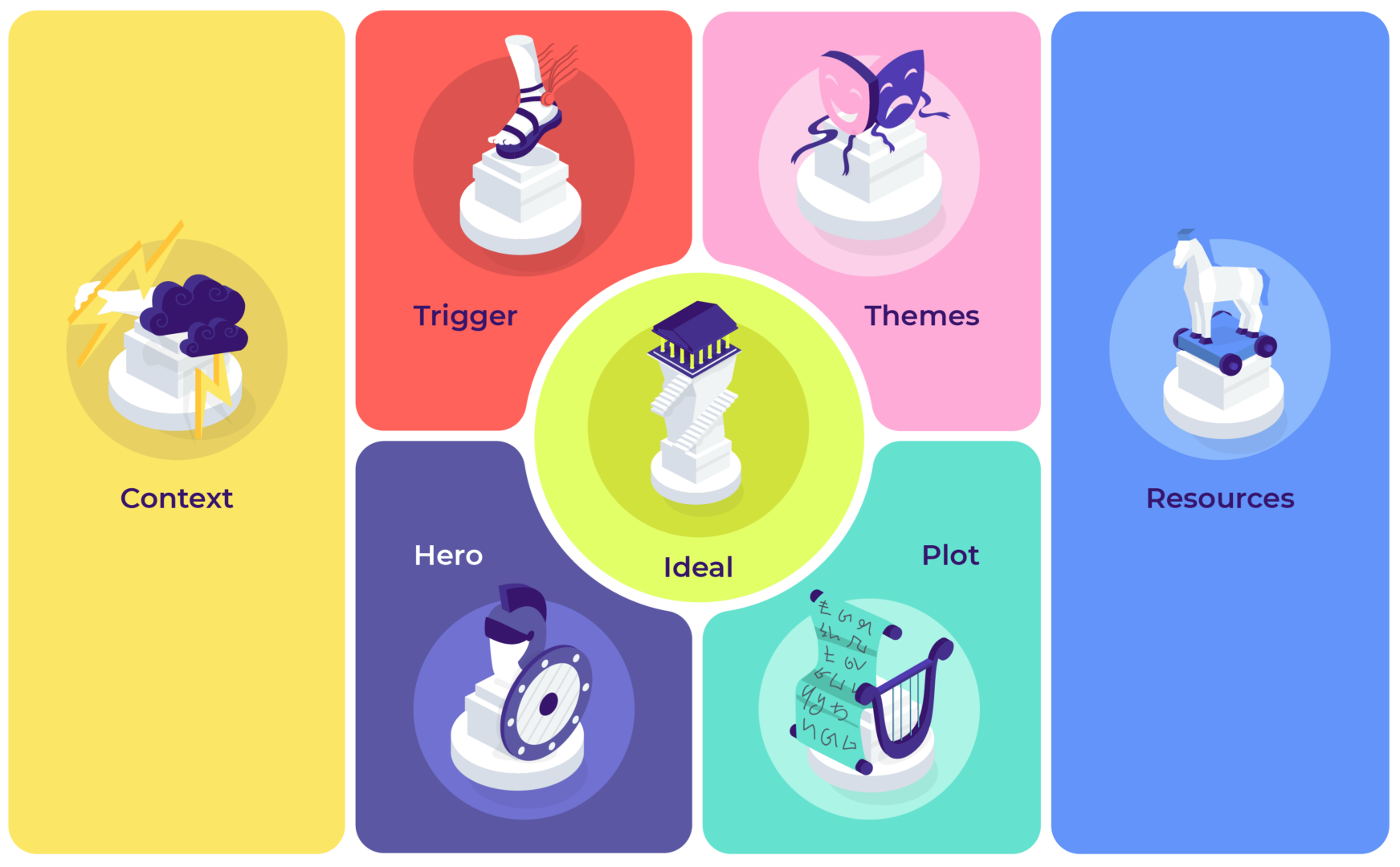
The 7 components of every great brand story
Thanks to the Brand Story Canvas, any brand story can be broken down into 7 components, as most stories are built around common narrative traits.
Context
The Context is the environment in which the story takes place. It refers to the external forces that impact your organisation, whether political, economical, technical, social and etc.
Resources
The Resources are the tangible and intangible assets of your brand. They are all internal and therefore 100% under your control.
Trigger
The Trigger is a kind of tension that gets the story started. It can be a precise event, or something more intangible such as a feeling of injustice, challenging the status quo or highlighting a problem or a call to action.
Ideal
The Ideal is the reason why your brand exists. It is also sometimes referred to as the why or the purpose of a brand. A good ideal should be relevant to your activity, aspirational and never-ending.
Hero
The Hero describes your brand as if it were a person. What personality do you want your brand to have, what gender, place of origin, tone of voice, etc?
Plot
The plot is the intrigue and covers the actions taken by the hero to reach its ideal. These actions can be distinctive processes, methods and activities that help move the story forward.
Themes
The Themes are general topics connected to your brand and which your brand can leverage to create a strong association of ideas.


The ultimate online guide to Brand Storytelling



The ultimate online guide to Brand Storytelling
Everything you need to know about what makes a great brand story and how to build one for your business.
Every day, we are exposed to over 4’000 brands. From our morning toothpaste to our late-night whisky, they are an integral part of our existence.
New and established brands alike want to tell us their story to get a share of our attention and, ultimately, of our wallets too. Brands with great stories don’t just advertise their products, they use storytelling as a strategic asset and offer us a window into their unique worldview. Mastering storytelling can give you and your organisation a real competitive edge, no matter its size or activity. Read on to find out how.
The origins of brand storytelling
Storytelling is a buzzword. From digital marketers to company executives and career coaches, everybody stresses the importance of storytelling. But despite all the marketing humdrum, storytelling is hardly a new concept.
Storytelling is ingrained in our DNA. Humans have been telling stories for as long as we can remember. Evidence of some of the first stories can still be found today, painted on the walls of prehistoric cave dwellings. They depicted events and ceremonies, detailed the local fauna or flora and were even used to warn others of danger.
Same old story?
From that point on, stories have never stopped evolving: from cave dwellings to cuneiform tablets and papyri, together with oral traditions bridging our earliest past to our digital present.
Stories have been a constant in all of human history, and as we evolved, so did they. They became richer, more complex, able to elicit emotions and spark debate and introspection. But the main mechanics of storytelling, the ability to weave together context, characters and a plot, have stayed the same. What was used then is still relevant today.


Tell a story that is worth believing in
When people believe in a brand story, they no longer see themselves as customers. They see themselves as actors or characters with an active part to play in the story.
Supporters of football teams like Chelsea FC, Paris Saint-Germain or Bayern Munich are not just fans of the sport. They believe in their team’s unique story, full of myths, heroes and rivals. This, more than the team’s performance, is what drives them to spend hundreds or thousands of euros annually on game tickets and merchandise. To outsiders, the willingness to invest so much time and money in a football team can seem frivolous. But that is only because they don’t believe in the “story of football teams.”
Find the right audience to tell your story to
Different people believe in different stories – Apple fans still go up against Microsoft or Android users because they believe in the story of so-called “Apple supremacy”, and because that story paints them in a positive light.
Owners of Rimowa luggage will acknowledge each other at airports because many still believe in the story of a “sophisticated traveller class,” while Crocs wearers are proud to defend the brand’s “comfort over style” mantra in any setting.



Tell a story that never ends
As a brand, you don’t want your story to end. You want to keep your customers endlessly engaged without having to reinvent the wheel every year. Take British rock mega-group Coldplay. When the band released Viva la Vida or Death and All His Friends in 2008, they called themselves the “greatest band in the world” and said the album was their masterpiece. Effectively, they told the world they had peaked, and what happened from that point is that interest in the group started to fade. By comparison, computer tech and IT consulting company IBM centres its story around the idea of building a smarter planet. The planet can always become smarter, and thus, their story can be unending.


How to create the perfect brand story
Now that we have clarified the importance of storytelling for brands, it is time to look at the “behind the scenes” of brand storymaking. What makes a good brand story? How do you create one? Are there differences between companies’ sectors or maturity levels? To answer these questions, we developed our own “storymaking” model: the Brand Story Canvas. Combining extensive research and learning from countless consulting assignments, our method for building brand stories is taught at top universities such as ESSEC in Paris, the Ecole Polytechnique Fédérale de Lausanne (EPFL) and Ecole hôtelière de Lausanne (EHL).

The 7 components of every great brand story
Thanks to the Brand Story Canvas, any brand story can be broken down into 7 components, as most stories are built around common narrative traits.
Context
The Context is the environment in which the story takes place. It refers to the external forces that impact your organisation, whether political, economical, technical, social and etc.
Resources
The Resources are the tangible and intangible assets of your brand. They are all internal and therefore 100% under your control.
Trigger
The Trigger is a kind of tension that gets the story started. It can be a precise event, or something more intangible such as a feeling of injustice, challenging the status quo or highlighting a problem or a call to action.
Ideal
The Ideal is the reason why your brand exists. It is also sometimes referred to as the why or the purpose of a brand. A good ideal should be relevant to your activity, aspirational and never-ending.
Hero
The Hero describes your brand as if it were a person. What personality do you want your brand to have, what gender, place of origin, tone of voice, etc?
Plot
The plot is the intrigue and covers the actions taken by the hero to reach its ideal. These actions can be distinctive processes, methods and activities that help move the story forward.
Themes
The Themes are general topics connected to your brand and which your brand can leverage to create a strong association of ideas.


DownloadThe ultimate online guide to Brand Storytelling
Every day, we are exposed to over 4’000 brands. From our morning toothpaste to our late-night whisky, they are an integral part of our existence.
New and established brands alike want to tell us their story to get a share of our attention and, ultimately, of our wallets too. Brands with great stories don’t just advertise their products, they use storytelling as a strategic asset and offer us a window into their unique worldview. Mastering storytelling can give you and your organisation a real competitive edge, no matter its size or activity. Read on to find out how.
The origins of brand storytelling
Storytelling is a buzzword. From digital marketers to company executives and career coaches, everybody stresses the importance of storytelling. But despite all the marketing humdrum, storytelling is hardly a new concept.
Storytelling is ingrained in our DNA. Humans have been telling stories for as long as we can remember. Evidence of some of the first stories can still be found today, painted on the walls of prehistoric cave dwellings. They depicted events and ceremonies, detailed the local fauna or flora and were even used to warn others of danger.
Same old story?
From that point on, stories have never stopped evolving: from cave dwellings to cuneiform tablets and papyri, together with oral traditions bridging our earliest past to our digital present.
Stories have been a constant in all of human history, and as we evolved, so did they. They became richer, more complex, able to elicit emotions and spark debate and introspection. But the main mechanics of storytelling, the ability to weave together context, characters and a plot, have stayed the same. What was used then is still relevant today.


Tell a story that is worth believing in
When people believe in a brand story, they no longer see themselves as customers. They see themselves as actors or characters with an active part to play in the story.
Supporters of football teams like Chelsea FC, Paris Saint-Germain or Bayern Munich are not just fans of the sport. They believe in their team’s unique story, full of myths, heroes and rivals. This, more than the team’s performance, is what drives them to spend hundreds or thousands of euros annually on game tickets and merchandise. To outsiders, the willingness to invest so much time and money in a football team can seem frivolous. But that is only because they don’t believe in the “story of football teams.”
Find the right audience to tell your story to
Different people believe in different stories – Apple fans still go up against Microsoft or Android users because they believe in the story of so-called “Apple supremacy”, and because that story paints them in a positive light.
Owners of Rimowa luggage will acknowledge each other at airports because many still believe in the story of a “sophisticated traveller class,” while Crocs wearers are proud to defend the brand’s “comfort over style” mantra in any setting.



Tell a story that never ends
As a brand, you don’t want your story to end. You want to keep your customers endlessly engaged without having to reinvent the wheel every year. Take British rock mega-group Coldplay. When the band released Viva la Vida or Death and All His Friends in 2008, they called themselves the “greatest band in the world” and said the album was their masterpiece. Effectively, they told the world they had peaked, and what happened from that point is that interest in the group started to fade. By comparison, computer tech and IT consulting company IBM centres its story around the idea of building a smarter planet. The planet can always become smarter, and thus, their story can be unending.


How to create the perfect brand story
Now that we have clarified the importance of storytelling for brands, it is time to look at the “behind the scenes” of brand storymaking. What makes a good brand story? How do you create one? Are there differences between companies’ sectors or maturity levels? To answer these questions, we developed our own “storymaking” model: the Brand Story Canvas. Combining extensive research and learning from countless consulting assignments, our method for building brand stories is taught at top universities such as ESSEC in Paris, the Ecole Polytechnique Fédérale de Lausanne (EPFL) and Ecole hôtelière de Lausanne (EHL).

The 7 components of every great brand story
Thanks to the Brand Story Canvas, any brand story can be broken down into 7 components, as most stories are built around common narrative traits.
Context
The Context is the environment in which the story takes place. It refers to the external forces that impact your organisation, whether political, economical, technical, social and etc.
Resources
The Resources are the tangible and intangible assets of your brand. They are all internal and therefore 100% under your control.
Trigger
The Trigger is a kind of tension that gets the story started. It can be a precise event, or something more intangible such as a feeling of injustice, challenging the status quo or highlighting a problem or a call to action.
Ideal
The Ideal is the reason why your brand exists. It is also sometimes referred to as the why or the purpose of a brand. A good ideal should be relevant to your activity, aspirational and never-ending.
Hero
The Hero describes your brand as if it were a person. What personality do you want your brand to have, what gender, place of origin, tone of voice, etc?
Plot
The plot is the intrigue and covers the actions taken by the hero to reach its ideal. These actions can be distinctive processes, methods and activities that help move the story forward.
Themes
The Themes are general topics connected to your brand and which your brand can leverage to create a strong association of ideas.


